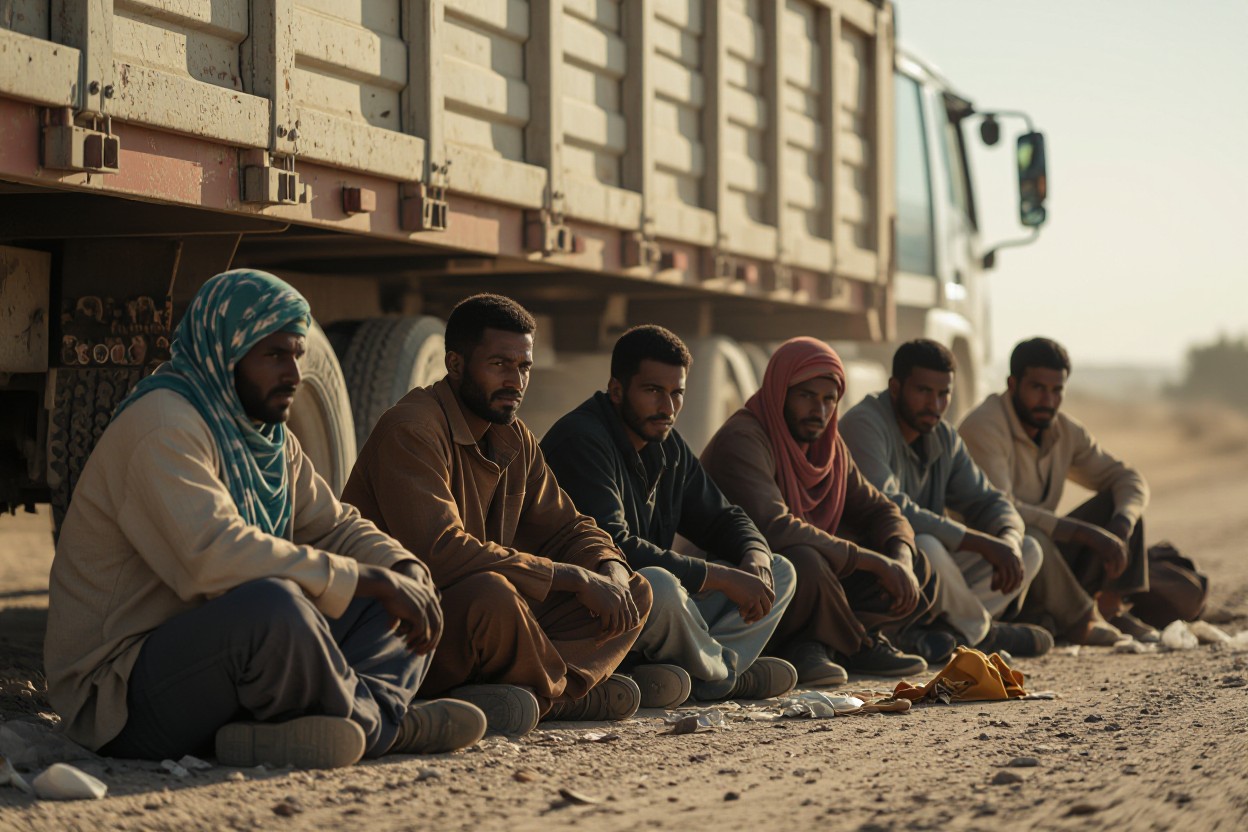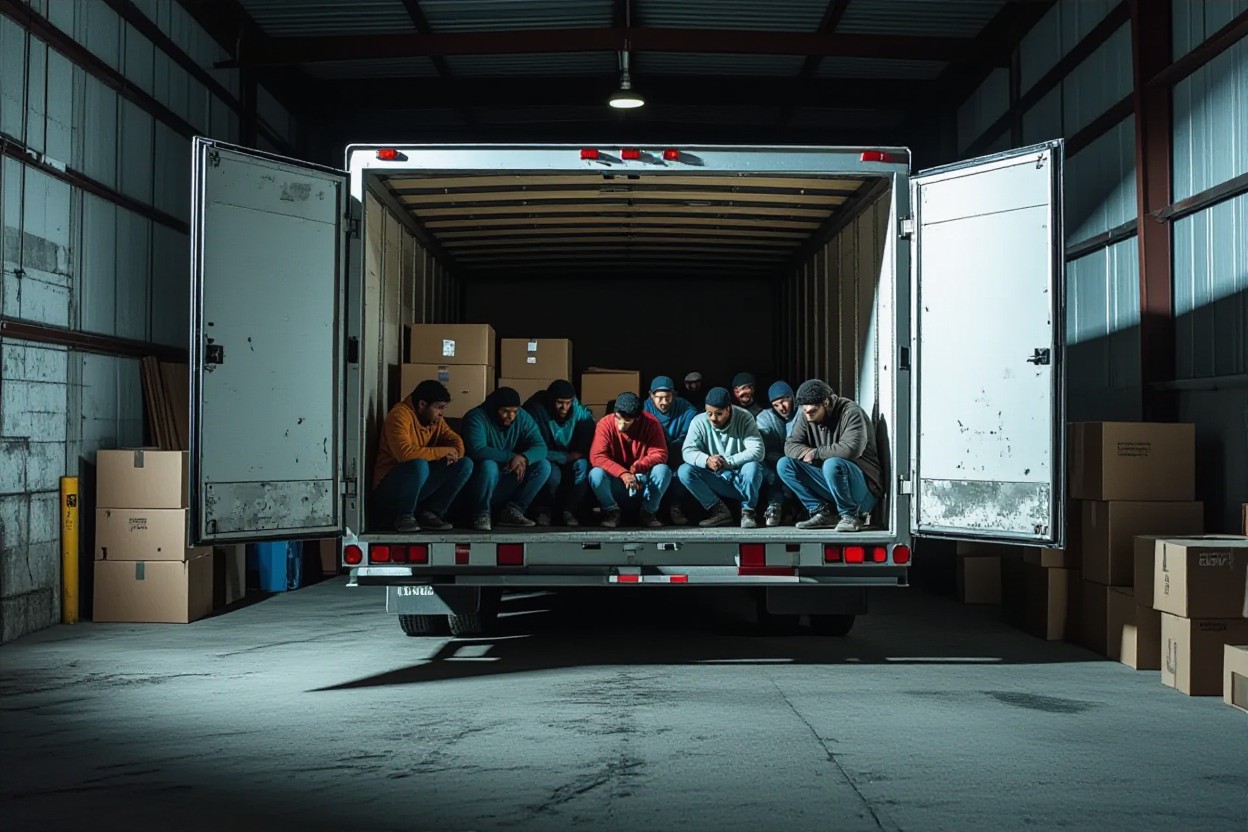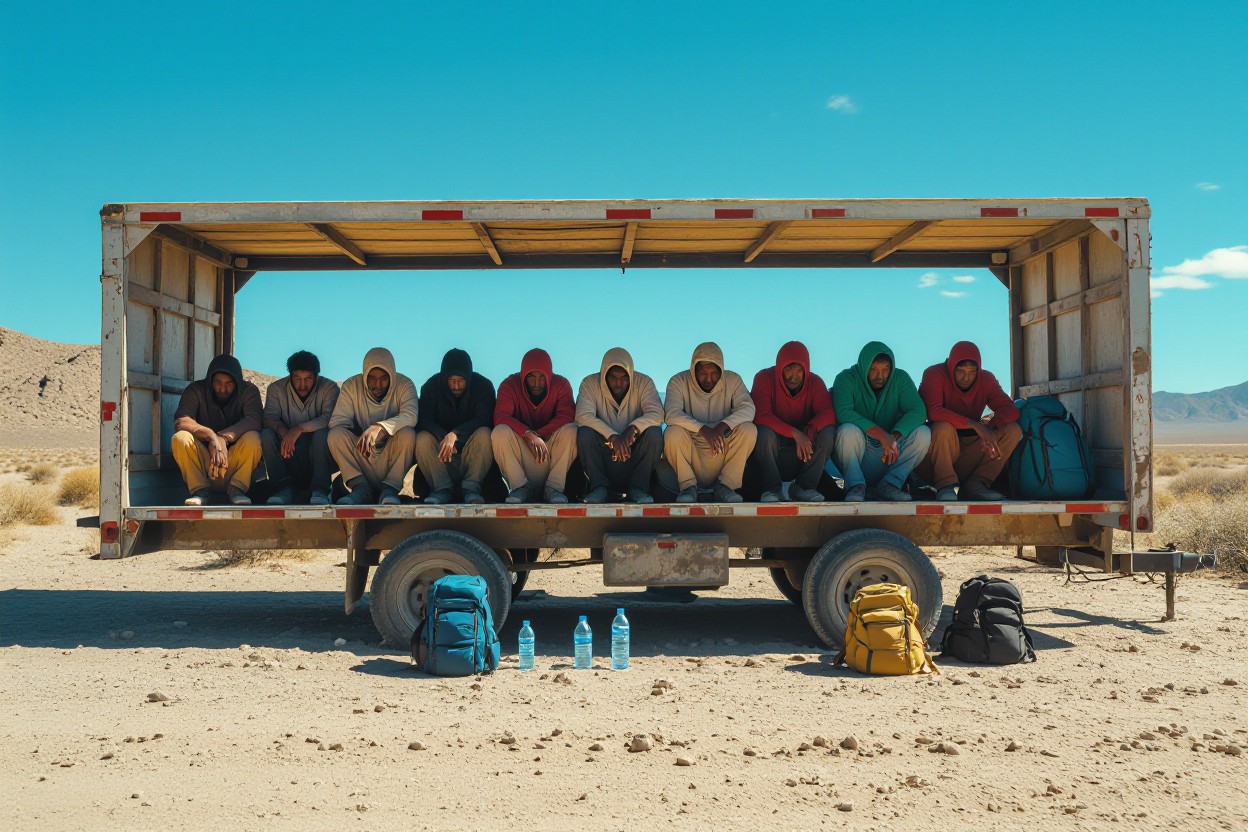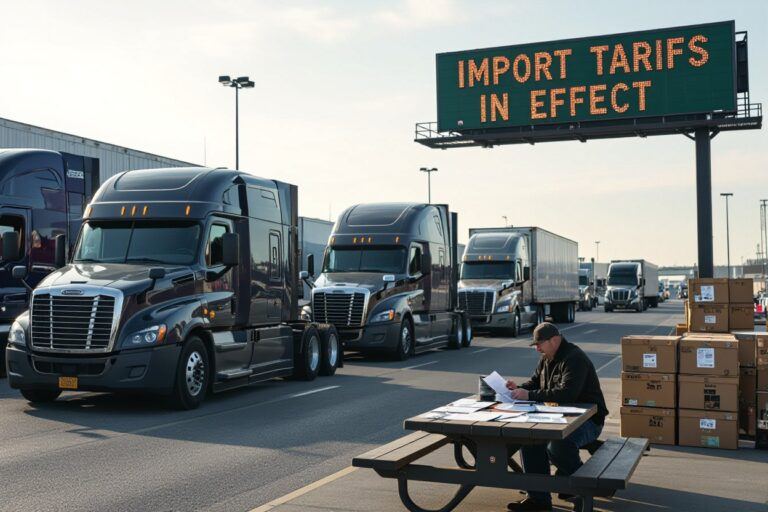
In an alarming incident, you should be aware that 13 migrants were discovered hidden in exceptionally cramped and dangerous conditions beneath a flatbed trailer in New Mexico. This event, involving a truck driver now facing federal smuggling charges, highlights the severe risks and human cost linked to illegal transportation. As someone interested in border security and immigration issues, you’ll find it important to understand how such operations jeopardize lives and what authorities are doing to respond to these perilous situations.

The Initial Stop: Circumstances Leading to the Discovery
You encounter an immigration stop on New Mexico State Road 26 just after midnight on June 26, where Border Patrol agents activate their flashing lights to pull over a semi-truck. The driver, an American citizen, cooperates as agents begin inspecting the vehicle. Initially, you find one migrant hiding in the cab without legal permission to be in the country. However, a deeper inspection reveals the presence of 12 more migrants concealed in a compartment underneath the flatbed trailer, leading to the driver facing federal smuggling charges.
The Harrowing Conditions Inside the Truck
You learn that the 12 migrants were squeezed into a small compartment beneath the flatbed trailer, enduring extremely tight, cramped conditions. A photo shared by Border Patrol leadership highlights the dangerous, confined space where these individuals were hidden. This discovery underscores the seriousness of the smuggling operation and the risk the migrants faced due to the lack of ventilation and space during the trip.
The migrants’ situation inside the truck was perilous, as you understand the compartment was not designed for human transport. Being tightly packed under the flatbed meant limited air circulation, extreme discomfort, and heightened danger of injury or suffocation. This reflects the smugglers’ indifference to human life, prioritizing profit over safety. Your awareness of such conditions helps highlight the urgent need for enforcement and humanitarian intervention to prevent similar incidents.
The Legal Implications of Human Smuggling
When you encounter cases like the recent discovery of 13 migrants hidden under a flatbed trailer, it’s important to understand the serious legal consequences faced by those involved. The truck driver, an American citizen, now confronts federal charges for transportation of illegal aliens. These offenses can result in significant penalties, including imprisonment and fines. Additionally, the migrants themselves enter removal proceedings, highlighting the complex intersection between criminal law and immigration enforcement you should be aware of.
A Glimpse into the Background of the Suspect
You should note that the suspect in this case is an American citizen, which adds layers to the legal and social implications of the incident. Despite being a U.S. national, the driver was involved in knowingly transporting migrants without permission, exposing his willingness to risk legal consequences for profit. While the names and nationalities of the migrants remain undisclosed, this case sheds light on how individuals in positions of trust can exploit vulnerable people, a behavior you might find disturbingly common in smuggling operations.
The background of the suspect reveals more than just nationality; it shows a pattern of disregard for human life as emphasized by the El Paso Sector Border Patrol Chief. Although the details about the driver’s prior history or motive are scarce, his actions demonstrate a
Identifying the Nationalities and Status of the Migrants
At the time of the stop on New Mexico State Road 26, the exact nationalities of the 13 migrants found under the flatbed trailer were not disclosed by authorities. What you should know is that all were foreign nationals without legal permission to be in the U.S. Following their discovery, these individuals were placed in removal proceedings. This means they face the legal process for potential deportation while their identities and cases are further examined by immigration officials.
The Human Cost of Smuggling: Personal Accounts
When you picture smuggling, it’s not just about numbers, but the people enduring extremely dangerous conditions. In this case, 12 migrants were found squeezed into a compartment beneath the trailer, with one hiding inside the cab—highlighting the risk to human life as smugglers prioritize profit over safety. The cramped space, as documented in photos released by Border Patrol Chief Walter N. Slosar, shows how migrants suffer in silence, facing suffocation, dehydration, and trauma during these illegal journeys.
These personal accounts reveal the stark reality behind many smuggling incidents that you might only see as headlines. The migrants’ survival depends on enduring overcrowded, confined conditions that can quickly become life-threatening. The Border Patrol’s description points to a blatant disregard for human safety and the intense fear and physical hardship these individuals face. Understanding this helps you see why addressing human smuggling requires more than enforcement—it requires empathy and comprehensive solutions.

Strategies Employed by Border Patrol in Smuggling Prevention
You witness how Border Patrol agents utilize targeted stops and thorough vehicle inspections to uncover human smuggling activities. In this case, agents acted on a patrol along New Mexico State Road 26, conducting a midnight immigration stop that revealed 13 hidden migrants—one in the cab and 12 under the flatbed trailer. Their methodical approach and vigilance in scanning all compartments of commercial vehicles help you understand the persistent efforts made to intercept smuggling attempts and protect lives from dangerous conditions imposed by smugglers.
The Broader Implications for Border Security and Policy
The discovery of 13 migrants hidden in hazardous conditions under a trailer highlights the ongoing challenges you face in border security. Such incidents emphasize the need for policies focusing on both enforcement and humanitarian concerns, pushing for enhanced resources and technology to detect sophisticated smuggling tactics. You see how the risks smugglers impose show little regard for human life, signaling a need for policy responses that balance security with migrant safety and legal pathways.
When you consider these smuggling cases, you’re confronted with the complex reality at the border where enforcement agencies like the Border Patrol must navigate a landscape of evolving tactics. Agents encounter individuals packed into confined spaces under flatbeds, enduring cramped, life-threatening conditions for the sake of illicit passage. Your understanding of these dangers underlines why policies must advance beyond traditional measures, incorporating technology, intelligence sharing, and cross-agency cooperation. You also see the pressure on legal frameworks to address root causes and improve migrant processing, emphasizing comprehensive strategies to reduce exploitation and safeguard human dignity.
Economic and Social Factors Driving Migration
The increasing number of migrants attempting dangerous crossings highlights the persistent economic and social challenges in their home countries. Factors such as
- lack of job opportunities
- poverty
- violence
- family reunification
often push individuals to risk hazardous journeys. Perceiving the promise of a better life and safety, many are driven to seek asylum despite the dangers involved, including situations like the recent case where 13 migrants were found hidden under a flatbed trailer in New Mexico.
Community Responses to Human Smuggling Incidents
You observe that community and law enforcement responses to incidents of human smuggling are vital in addressing this ongoing crisis. Actions often include increased border patrols, public awareness campaigns, and support services for victims. For example, the recent discovery of 13 migrants crammed under a semi-truck’s flatbed emphasized the inhumane conditions and the need for community vigilance. Engaging local organizations to provide humanitarian aid and preventive outreach helps reduce exploitation and safeguard vulnerable populations.
When you consider community responses, it’s important to note how coordinated efforts between border agents, local groups, and policy makers can make a significant difference. The 13 migrants found under the flatbed trailer endured cramped, unsafe conditions—highlighting the dangerous repercussions of smuggling. Your role in supporting awareness initiatives and enforcement can help protect both migrants and your community. Positive outcomes arise from comprehensive strategies that combine law enforcement with outreach and victim assistance programs, ultimately aiming to reduce such illegal activities and human suffering.
To wrap up
As a reminder, when you consider the discovery of 13 migrants hidden under the flatbed trailer, you see the severe risks and legal consequences involved in human smuggling. You should understand that smugglers endanger lives for profit, and law enforcement continues to actively pursue those responsible. If you encounter or suspect similar activities, your awareness and reporting can help prevent further tragedies and support efforts to uphold immigration laws and safety on the roads.



